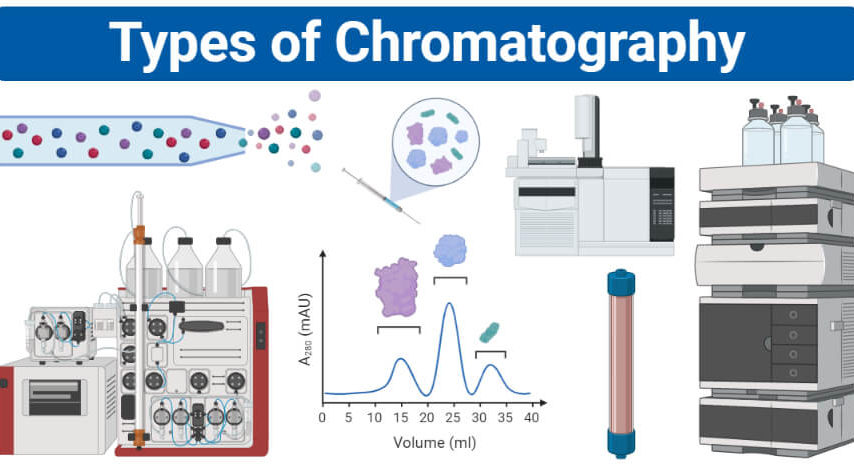Chromatography is a physical method that plays an important role in chemical, biochemical, and industrial fields as it is an analytical technique used to separate the mixture of chemicals and analyze them separately as individual components. It is used to analyze both solid, liquid, and sometimes unknown substances too.
There are four main types of chromatography and they are liquid chromatography, gas chromatography, paper chromatography, and thin-layer chromatography. And in all these types there are two phases called the Mobile phase and the Stationary phase. We will briefly learn about liquid chromatography in this article.
Liquid chromatography
Liquid chromatography is a separation technique of which is used to separate and analyze complex liquid mixture where ions or molecules are dissolved. In liquid chromatography the mobile phase is liquid and the stationary phase is solid which is either silica or alumina.
The separation process in liquid chromatography is based on the polarity of molecules. Liquid chromatography is used to test any form of liquid to find and test the components in it.
For example, to test the pollution level in lake or river water. It is carried in a plane or a column that is packed with a stationary phase and the liquid in the mobile phase will pass through it and interact with it in different degrees and therefore separating the compounds.
The two most popular types of liquid chromatography are given below.
Both HPLC and UHPLC have their stationary phases packed inside a column which can be separated into two different categories depending on packing and particles and the liquid mobile phases pass through it.
High-performance liquid chromatography ( HPLC )
HPLC is a chromatographic analytical technique that is used by scientists to identify, separate, and quantify the components in a mixture in fields of analytical chemistry, biochemistry, and industries.
High-performance liquid chromatography was named high-pressure liquid chromatography earlier because its liquid mobile phase required a higher pressure than that of the gasses used in gas chromatography.
HPLC plays an important role in the pharmaceutical and food industries since itis used to detect the raw ingredients in the components to perform qualitative and quantitative analysis.
These tests performed with HPLC are done under strict regulations established by the government. HPLC not only helps to separate and analyze components in synthetic drug formulas but also for herbal medicines.
How high-performance liquid chromatography works?
Let us see what the HPLC column, stationary phase, and mobile phase of high-performance liquid chromatography contains before knowing the exact process of it.
HPLC column: It is the foundation of the HPLC system.it contains the stationary phase components which are used to separate the sample mixture.
Stationary phase: It is a solid bed within the HPLC column whose solid particles such as silica and polymers are coated with the retention phase.
Mobile phase: It is a liquid medium that is used to transports the sample through the high-performance liquid chromatography system.
The stationary phase containing the analyte is injected onto the column and pumped through with the flow or force of the mobile phase and the pressure makes this technique much faster. While passing through the column, the components react differently with the stationary phase which causes different elution rates which leads them to separate at different times.
HPLC system
HPLC system is a technique used for separation in which the liquid is used to force the sample at high pressure. This is done by passing the sample through a column that is packed with a stationary phase to identify and quantify the components in it.
The HPLC system consists of a pump, an injector, a filter, and one or more detectors. This system helps to makes fast separation possible in the fields of biochemistry, biology, pharmaceutical, and food industries.
Types of high-performance liquid chromatography
Normal phase HPLC
In this separation, the retention material is polar and the mobile phase is non-polar and these non-polar compounds will quickly pass through the column than the polar compounds as it sticks less to the polar silica by which the columns are filled with.
Reversed-phase HPLC
In this separation, the stationary phase is nonpolar and the mobile phase is polar. The column size is the same as the normal phase HPLC column which is 4.6mm of internal diameter and 150 to 250mm in length.
A polar solvent like methanol is used to make the compounds pass quickly through the column as a strong attraction occurs between the polar solvent and the polar molecules.












